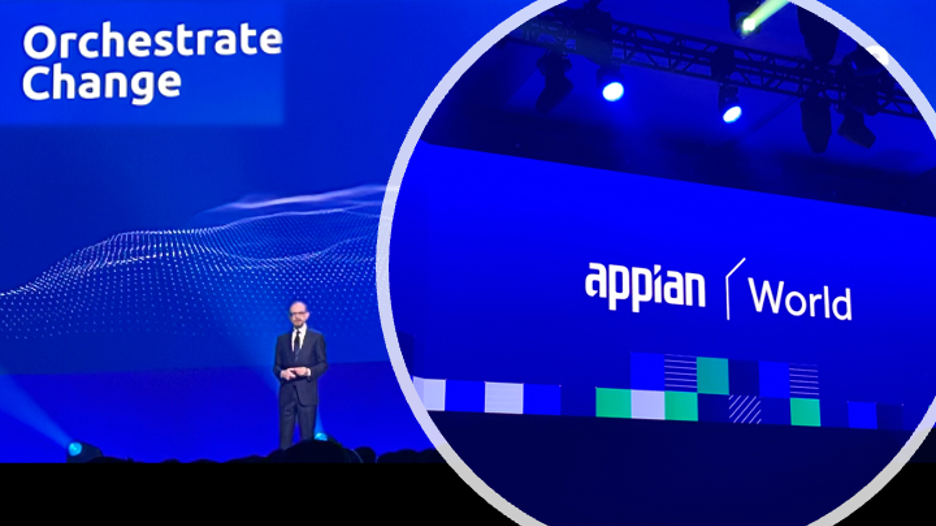This year’s Appian World customer conference took place from April 15 to 17 in Washington D.C. At the event, I joined nearly 2,000 Appian customers and partners who came to see Appian’s latest innovations. Appian offers a business process automation and low-code platform that enables organizations to automate many different workflows, tasks, and processes, increasing efficiency and improving team collaboration. It offers products for functions such as federal, state, and local procurement, public sector case management, financial services customer onboarding, insurance underwriting, and claims processing.
The company was founded almost 25 years ago in McLean, Virginia, just down the road from this year’s conference. In this article, I will discuss the event and Appian’s newly released Data Fabric product, highlighting how its AI integration enhances data utilization. In particular, I’ll explain how this product can be an asset for data management processes and data accessibility. For more information on Appian, you can also read my recent article about how Appian brings AI automation to ERP and SCM solutions.
Event Recap
The keynotes and breakout sessions at Appian World concentrated on AI, data, process automation, and product roadmaps. Appian is shifting its emphasis towards mission-critical processes, mainly through its Data Fabric product, automation features, and the implementation of private AI. Its private AI strategy ensures that enterprises have control over their data, which prevents that data from being used to train public models that other companies can access.
Throughout the event, Appian promoted the strengths of its Data Fabric offering, particularly when combined with private AI and retrieval-augmented generation (RAG). This integration ensures that the RAG service receives only the essential data for effective operation. The company also highlighted how its process framework, which connects Data Fabric to AI-powered insights, organizes data so organizations can use it wherever it resides.
Appian’s low-code development makes integrating AI into business processes straightforward, helping AI and humans work together effectively. This approach emphasizes the importance of generative AI in supporting human decision making. Also, AWS and Appian have extended their partnership, which provides strategic capabilities for end-to-end process automation drawing from Appian’s AI and Data Fabric along with Amazon Bedrock LLMs and SageMaker machine learning for enterprises. By leveraging the capabilities of Amazon Bedrock, Appian gains the ability to host LLMs within customer compliance boundaries and then privately customize those models, ensuring that sensitive data remains secure and confidential.
Appian Data Fabric
Appian’s Data Fabric connects data across systems in a unified view. It’s a virtual layer, so you do not have to migrate data from where it might live, such as an ERP, SCM, HCM, or CRM application. The data can be on-premises, in the cloud, or in a multi-cloud or hybrid environment. This Data Fabric can be a helpful tool, especially in transformation projects. It enables organizations to connect, access, and integrate data from various sources, applications, and systems within their business environments for more straightforward data modeling.
The Data Fabric is utilized across multiple industries to improve operations and data use. In customer service centers, it compiles customer data from various systems into a single view, helping support teams resolve issues more efficiently. More broadly, it can create comprehensive customer profiles by merging data from different sources, which assists businesses in understanding customer needs and preferences. Financial institutions use Data Fabric to detect fraud by identifying unusual patterns and anomalies. In manufacturing and energy utilities, Data Fabric helps facilitate preventative maintenance by predicting equipment failures and scheduling timely service. Additionally, in the context of the Covid-19 pandemic, this offering supports the development of return-to-work risk models that integrate health and safety data, helping companies assess risks associated with employees returning to the workplace.
What Appian Executives Are Saying
The opening keynote at Appian World 2024 began with CEO Matt Calkins talking about the importance of data. “AI itself is nothing without data,” he said. “Companies need to realize that internal data is the most valuable part of the information stream they need to manage.” But AI doesn’t just work automatically without a structured system to guide it. This underscores the need for well-organized data and algorithms to feed AI effectively. Calkins said, “Our process framework makes AI easy to use. But our Data Fabric gives us a data advantage by giving organizations a common semantic route to using data wherever it resides—as if it was unified into one place.”
I also spoke separately with Appian executives to understand the company’s new innovations. Suvajit Gupta, the executive vice president of engineering who has been with Appian for over a decade, discussed the infrastructure of its Data Fabric technology. He emphasized that process automation, private AI, data, tools, applications, and process mining are integral to delivering a comprehensive experience to organizations. Look for a future article where I’ll dig deeper into these foundational elements of the Data Fabric offering.
Christopher O’Connell, Appian’s global leader of partners and alliances, discussed the significance of the company’s ecosystem and data sources. Having been with Appian for over 15 years, O’Connell is another example whose long tenure reflects a theme of stability within the company’s leadership. O’Connell noted the expansion of Appian’s ecosystem, which was driven by new partnerships through the Appian platform and, specifically, the capabilities of Data Fabric.
I also met with Jacob Rank, who has been with Appian for 17 years, transitioning from being a consultant to his current role as senior director of product management. Rank explained the capabilities of the Data Fabric product and its potential applications across various industries. I expanded the discussion by suggesting additional uses for Data Fabric, particularly addressing the common issue of organizations lacking comprehensive data management strategies.
Finally, I spoke with Ben Farrell, vice president of corporate communications, who has been with the company for 16 years. We discussed how the company’s innovations are communicated to global enterprises. Additionally, we explored whether Appian intends to remain focused on process automation and workflow or if there is a new direction for its Data Fabric technology.
Looking Ahead
The Appian platform can help eliminate time-consuming and costly data migrations by seamlessly connecting to data wherever it resides. Its Data Fabric technology is designed to integrate data from multiple systems, providing a unified and comprehensive view of enterprise data. Appian enjoys a strong reputation for its business process automation, low-code development, and case management capabilities. However, there may be some ambiguity regarding Appian’s vision as perceived by customers and vendors.
In the bigger picture, I see the landscape changing, with data management becoming increasingly central to enterprise strategies. This will bring new challenges and opportunities for Appian in the future. Does Appian want to position its Data Fabric to accommodate the future with new data integrity offerings, or with existing products? Look for more insights from me in the coming months on this and how Appian can maximize its product offerings.























































































